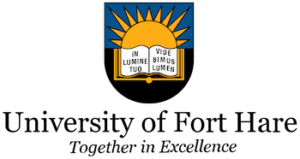
The University of Fort Hare
*The University of Fort Hare was established on this date in 1916. The University of Fort Hare is a public university in Alice, Eastern Cape, South Africa.
Originally, Fort Hare was a British fort established during the wars between British colonizers and the Xhosa in the 19th century. Some of the ruins of the Fort are still on campus today, as well as the graves of some of the British soldiers who died while on duty there. During the 1830s, the Lovedale Missionary Institute was built near Fort Hare. James Stewart, one of its missionary principals, suggested in 1878 that an institution for the higher education of Black students was needed. Fort Hare had many academic associations over the years.
It was initially called the South African Native College or Fort Hare Native College and was attached to the University of South Africa. It then became the University College of Fort Hare and was associated with Rhodes University. The university's first principal, Fort Hare, was Alexander Kerr. D. D. T. Jabavu, who lectured in Latin and African languages, was its first Black staff member. In accord with its Christian principles, fees were low and heavily subsidized. Several scholarships were also available for indigent students.
With the introduction of apartheid, higher educational institutions in South Africa were strictly segregated along racial lines; Blacks had previously gone to classes with Indians, coloureds, and a few white students. From 1953, the school became part of the Bantu education system. With the passage of the Promotion of Bantu Self-Government Act in 1959, it was nationalized and segregated along racial and tribal lines, and teaching in African languages rather than English was encouraged. Fort Hare became a Black university in 1970, but the state government continued to exert strict control over it.
After the end of apartheid, Oliver Tambo became chancellor of the university in 1991. Fort Hare alums were part of many subsequent independence movements and governments of newly independent African countries. Among those who studied at Fort Hare and later became leaders of their countries were Kenneth Kaunda, Seretse Khama, Yusuf Lule, Julius Nyerere, Robert Mugabe, and Joshua Nkomo. Leading opponents of the apartheid regime who attended included Nelson Mandela, Govan Mbeki, and Oliver Tambo of the African National Congress, Mangosuthu Buthelezi of the Inkatha Freedom Party, Robert Sobukwe of the Pan Africanist Congress, and Desmond Tutu.
Mandela, who studied Latin and physics there for almost two years in the 1940s, left the institution because of a conflict with a college leader. He later wrote in his autobiography: "For young Black South Africans, it was Oxford and Cambridge, Harvard and Yale, all rolled into one." In 2005, the University of Fort Hare was awarded the Order of the Baobab in Gold for "Exceptional contribution to Black academic training and leadership development on the African continent.